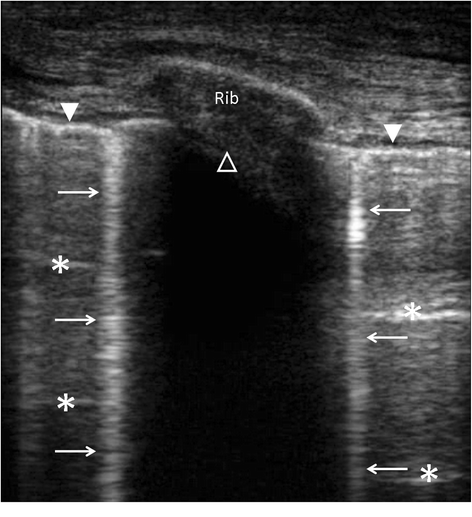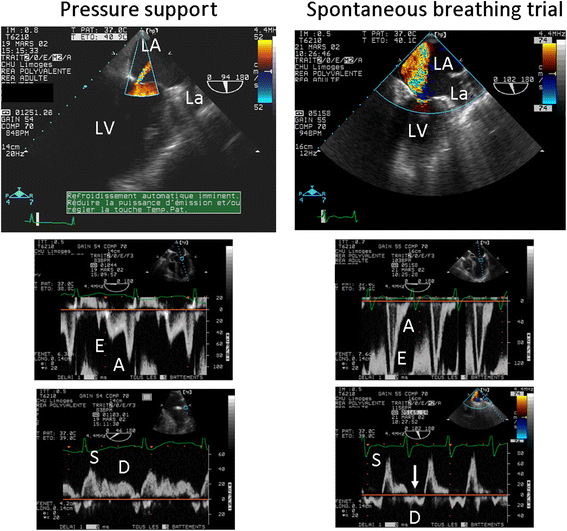Critical care ultrasonography in acute respiratory failure
- PMID: 27524204
- PMCID: PMC4983787
- DOI: 10.1186/s13054-016-1400-8
Critical care ultrasonography in acute respiratory failure
Abstract
Acute respiratory failure (ARF) is a leading indication for performing critical care ultrasonography (CCUS) which, in these patients, combines critical care echocardiography (CCE) and chest ultrasonography. CCE is ideally suited to guide the diagnostic work-up in patients presenting with ARF since it allows the assessment of left ventricular filling pressure and pulmonary artery pressure, and the identification of a potential underlying cardiopathy. In addition, CCE precisely depicts the consequences of pulmonary vascular lesions on right ventricular function and helps in adjusting the ventilator settings in patients sustaining moderate-to-severe acute respiratory distress syndrome. Similarly, CCE helps in identifying patients at high risk of ventilator weaning failure, depicts the mechanisms of weaning pulmonary edema in those patients who fail a spontaneous breathing trial, and guides tailored therapeutic strategy. In all these clinical settings, CCE provides unparalleled information on both the efficacy and tolerance of therapeutic changes. Chest ultrasonography provides further insights into pleural and lung abnormalities associated with ARF, irrespective of its origin. It also allows the assessment of the effects of treatment on lung aeration or pleural effusions. The major limitation of lung ultrasonography is that it is currently based on a qualitative approach in the absence of standardized quantification parameters. CCE combined with chest ultrasonography rapidly provides highly relevant information in patients sustaining ARF. A pragmatic strategy based on the serial use of CCUS for the management of patients presenting with ARF of various origins is detailed in the present manuscript.
Keywords: Echocardiography; Echocardiography Doppler; Pulmonary edema; Respiratory distress syndrome; Respiratory insufficiency; Ultrasonography.
Figures


Comment in
-
Pulmonary vein signal in mitral regurgitation.Crit Care. 2018 May 11;22(1):123. doi: 10.1186/s13054-018-2031-z. Crit Care. 2018. PMID: 29747648 Free PMC article. No abstract available.
References
Publication types
MeSH terms
LinkOut - more resources
Full Text Sources
Other Literature Sources
Medical

